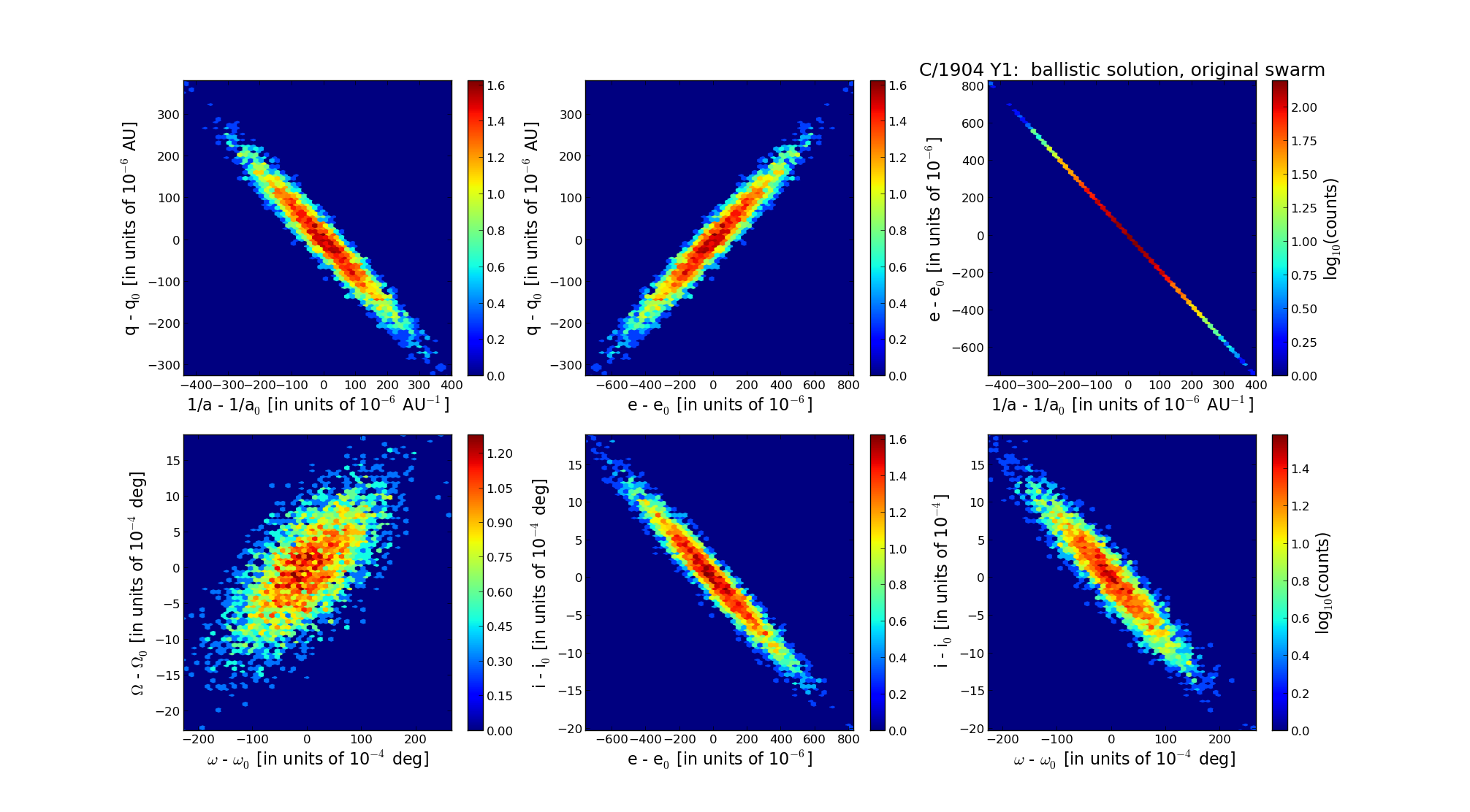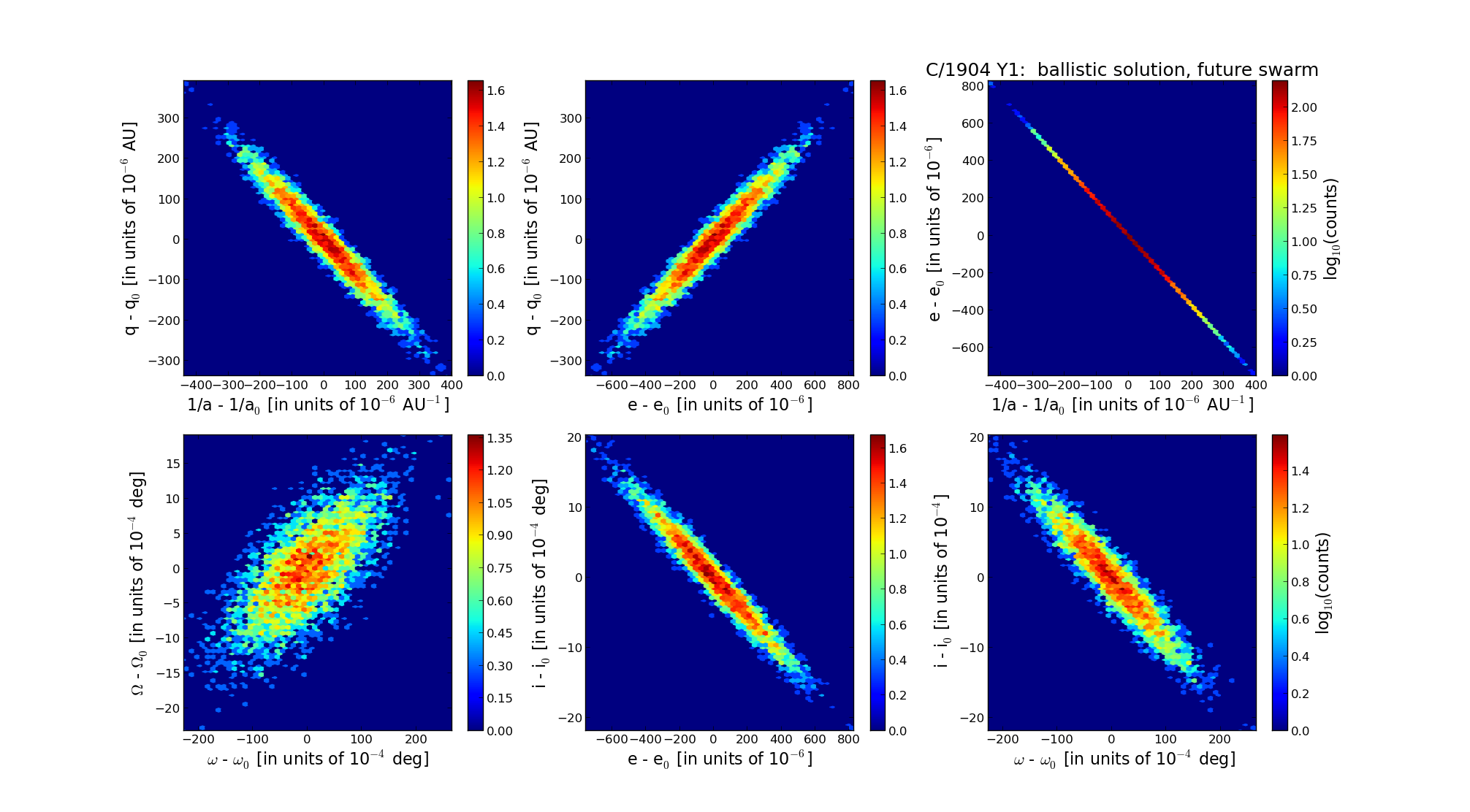| Solar System Dynamics & Planetology Group |
 |
C/1904 Y1 Giacobini |  |
| Solar System Dynamics & Planetology Group |
 |
C/1904 Y1 Giacobini |  |
| number of observations | 164 |
| number of residuals | 302 |
| data interval | 1904 Dec. 18 — 1905 May 2 |
| rms [arcsec] | 2.87 |
| orbit quality class | 2b |
| Epoch (TT) | 19041116.0 | = JD 2416800.5 |
| time of perihelion passage (TT) | 19041103.774111 | ± 0.013312 |
| perihelion distance | 1.88176420 | ± 0.00010009 |
| eccentricity | 1.00034373 | ± 0.00022266 |
| argument of perihelion [deg] | 40.723034 | ± 0.006760 |
| longitude of the ascending node [deg] | 219.786197 | ± 0.000583 |
| inclination [deg] | 99.600058 | ± 0.000577 |
| inverse semimajor axis [10-6 au-1] | -182.66 | ± 118.32 |

| Epoch (TT) | 16031204 | |
| time of perihelion passage (TT) | 19041103.420926 | ± 0.013760 |
| perihelion distance | 1.88656503 | ± 0.00009819 |
| eccentricity | 0.99980792 | ± 0.00022134 |
| argument of perihelion [deg] | 40.672000 | ± 0.006737 |
| longitude of the ascending node [deg] | 219.740942 | ± 0.000570 |
| inclination [deg] | 99.546209 | ± 0.000554 |
| inverse semimajor axis [10-6 au-1] | 101.81 | ± 117.33 |

| Epoch (TT) | 22080725 | |
| time of perihelion passage (TT) | 19041104.322846 | ± 0.013289 |
| perihelion distance | 1.88304686 | ± 0.00010131 |
| eccentricity | 0.99934541 | ± 0.00022099 |
| argument of perihelion [deg] | 40.729565 | ± 0.006728 |
| longitude of the ascending node [deg] | 219.768501 | ± 0.000580 |
| inclination [deg] | 99.640020 | ± 0.000593 |
| inverse semimajor axis [10-6 au-1] | 347.62 | ± 117.38 |